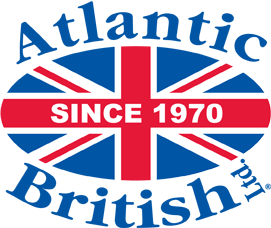Reeves Callaway, founder of tuning firm Callaway Cars and a legend in the Corvette world, passed away on July 11th. While he was most well-known for his sports car projects, he also created the 1999 Range Rover Callaway – the first high-performance-oriented Range Rover model sold from a Land Rover dealership, anywhere in the world.
In the scheme of Callaway projects, which are all assigned a code starting with the letter C, the Range Rover Callaway was C11. Land Rover North America commissioned a run of 220 vehicles, all built off of late 1998 4.6 HSE vehicles and sold in the 1999 model year. They were engineered using the original GEMS engine management system, in a transitional period where most model year 1999 Range Rovers used the newer Bosch system.

The Callaway was the first performance-oriented Range Rover, and would be the only performance model officially offered until the 2006 Range Rover Supercharged. The modified 4.6-liter Rover V8 produced 240 horsepower and 285 lb-ft of torque, an increase of 10% over the standard numbers. Callaway's stated goal in developing the vehicle was to cut time off the 0-60 and quarter-mile times, compared to the standard 4.6 HSE Range Rover; to that end, the Callaway takes about a second off the 0-60 time of any other factory P38.
Reeves Callaway had played around with Range Rovers before -- famous auto journalist David E. Davis reviewed the "Callaway Vette Ranger" in the August 1989 issue of Automobile magazine, and apparently, there were two of these "Vette Ranger" Range Rover Classics built by Callaway in the 1980s with 5.7-liter Corvette V8s. (As of a 2012 Corvette message board thread, at least one of them still exists.) While Callaway was best known for his pursuits with Corvettes and other American iron, he got his start selling mail-order turbo kits for BMWs in the 1970s, and always had a foothold in Europe, including a German division of his company.
The P38 Range Rover Callaway engines had higher compression than the standard 4.6 -- 9.60:1 instead of 9.35:1, accomplished by shaving the cylinder heads down. As they are shaved down to the maximum, the service manual recommends replacing them with new (shaved down) heads instead of doing any further work to the originals. The valve seats are also modified to allow enhanced gas flow into the chamber, with a different cut from the standard 4.6. The valve guides are also modified with a chamfer to allow more gases into the cylinder. All this head modification also required a modification to the rocker shaft pedestal mounting plates to account for the modified geometry.
Further engine modifications included changes to the intake manifold, which was port matched to the modified heads; the ram air intake pipes, which were all shortened; the throttle plate, which was slightly larger than stock; and the air cleaner box, which was modified for more airflow. The air intake hose connecting the air box to the plenum was a carbon fiber unit with rubber ends.
The exhaust was a dual-exit system, which at that point was new to the Range Rover. The entire system was designed with less backpressure, again to increase performance. Though a twin-exit system was new to Range Rover with the Callaway, all P38s from the 1999 models with the Bosch management system would also have twin exhausts.

Driveline modifications included a different torque converter, a ratio change in the transfer box to 1.294:1 high and 3.481:1 to increase highway acceleration (making a taller high range and a shorter low range), and strengthened axle shafts. There was also a four-pin front differential, which would go on to heavily influence the four-pin front diff used in the later years of P38 production.
All of this modification was tied together with a custom-programmed engine computer, transmission computer, and transfer case computer. In the land of P38 maintenance and restoration, where dedicated (and sometimes crazy) owners put immense amounts of investment and learning into maintaining the vehicles' mid-1990s computers, this is the biggest hangup with restoring a Callaway -- the three computers are all reprogrammed to work with each other, and all need to be present in Callaway specification for everything to work correctly. All of the modified parts and computers are labelled with Callaway labels.

There were 220 Callaway Range Rovers made, in three colors: Niagara Gray, Epsom Green, and Rutland Red. The easiest giveaway, other than the Callaway badging on the wings and tailgate, is the numbered badge above the stereo on the dashboard, which is located above the Callaway logo embossed in the shift knob. The intake plenums also have Callaway badging on the top. They had color-matched bumpers, grilles, and mirrors, and all had Proline wheels.
Like all P38s all these years on, many have fallen off the road. Of those that remain, though, people have paid attention to how special they are, and they're putting effort into restoring them. (One of our customers was featured in Roverlog ten years ago for his efforts restoring Callaway 216). Number 15 showed up at a Mecum auction last year, and they occasionally show up on auction sites like Bring a Trailer.
In the overall story of Reeves Callaway and the company he created, the Range Rover Callaway will never hold as much of a position as their iconic American muscle projects. His impact will always first and foremost be on the Corvette world, and worlds adjacent to General Motors products. The Callaway P38 was still a big lumbering body-on-frame SUV, but with the hand of Callaway on it, it's also the fastest you can go in a right-off-the-lot Land Rover with a ladder chassis and solid axles.
With thanks to Tom Annino for photos and research assistance.
Get the ROVERLOG Newsletter Delivered to your inbox
Sign up and receive once every 2 weeks





















